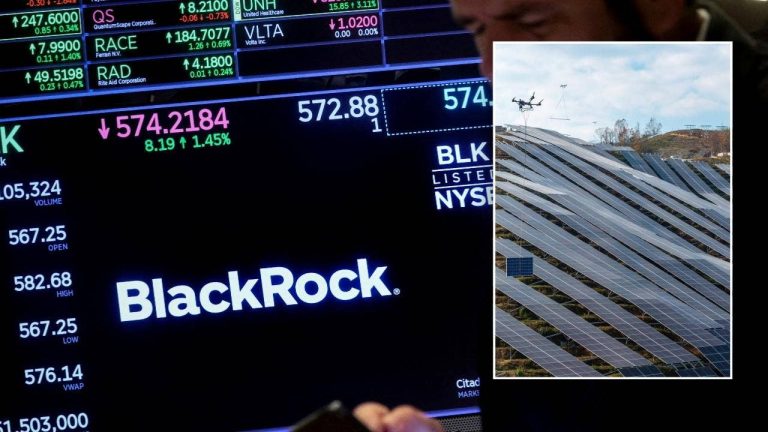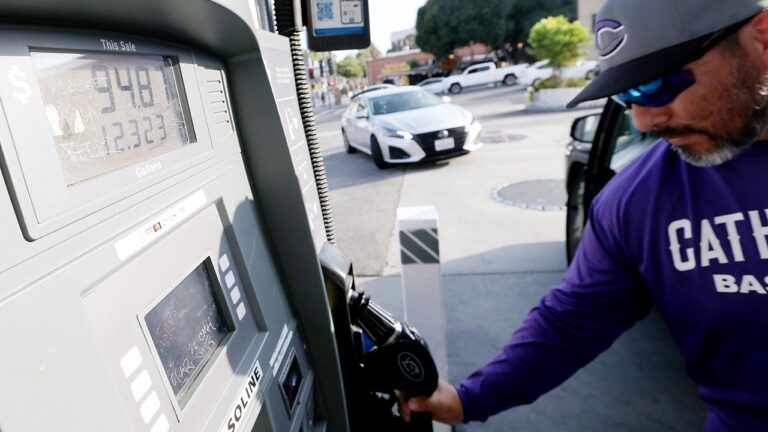
The large crypto trader had spun up a bounty of wallets to stake more than a million of Chainlink’s LINK tokens – apparently a workaround to the original 7,000-token-per-wallet limit.

LINK is the native token for Chainlink, an oracle network that helps bring real-world information to smart contracts.
(Shutterstock)
Posted January 15, 2025 at 11:57 am EST.
In 2022, the blockchain project Chainlink rolled out new functionality allowing crypto investors to stake the project’s tokens – letting users lock them up in exchange for rewards. In an effort to assure broad participation, Chainlink initially imposed a 7,000-token limit for each wallet.
But one clever trader managed to circumvent limits on the activity by creating over a hundred wallet addresses to stake more than 1 million LINK tokens – worth more than $20 million at the current market price.
Now, that trader, who has been identified as the pseudonymous user “Oldwhite” on the OpenSea platform, appears to be moving to unwind some of the positions at a substantial profit – in some ways validating the hydra-headed wallet strategy and underscoring the difficulty projects sometimes face in trying to enforce such limits, however worthy the intentions.
Onchain Analysis
Blockchain data examined by Unchained shows that, since November, some 113 staking wallets linked to the trader claimed their LINK staking rewards.
Starting on Dec. 29, the Chainlink “whale,” a colloquial term used to describe traders with outsize positions, sent a total of 280,164 LINK tokens worth about $6 million to Binance, based on analysis by Unchained. The transfer of tokens to a crypto exchange is often a signal of the holder’s intentions to sell.
The latest transfers took place on Monday, when the wallet address sent 20,244 LINK to the crypto exchange.
The whale’s actions suggest that they are capitalizing on LINK’s price increase since the start of Chainlink’s staking program in December 2022. LINK is trading at $21.27 at presstime, a roughly 200% jump since then.
Read More: Crypto-Friendly Summer Mersinger Is Now the Top Contender for CFTC Chair
Using Sybil Techniques to Game the System
The point of the Chainlink staking program is that LINK holders who stake their tokens – depositing them into the protocol – contribute to the security performance of the project. The deposits act as guarantees for the performance of the project’s flagship “oracle” – essentially a blockchain-integrated data feed that relays crypto prices into on-chain protocols such as decentralized lenders and exchanges. In return for helping secure the network, stakers earn rewards denominated in LINK.
The LINK whale used one address, which starts with 0x4a4, to receive its LINK holdings from 114 wallets. All but one of them had staked 7,000 tokens. The remaining wallet stemmed from stake.link, a liquid staking provider for Chainlink, which has sent 60,244 LINK tokens 0x4a4 in the past eight days.
The 113 staking wallets each claimed their rewards between November and January and consolidated their holdings into the 0x4a4 address.

In a blog post in August 2023, Chainlink changed its staking policies to allow a single address to stake a maximum of 15,000 LINK. Prior to the new staking policy, the limit per staking address was 7,000 tokens.
Before the consolidation, the group of 113 Chainlink staking addresses received their initial tokens from a single address, 0xC54b, which had the name “Oldwhite” on NFT platform OpenSea.
Dispersing thousands of LINK tokens across many wallet addresses appears to have been a way for Oldwhite to “Sybil” the system – a term for when a trader pretends one entity was numerous so as to bypass the token limit per staking address.
The maximum was imposed to “reduce the risk of a few participants dominating the pool in the early stages,” according to a 2022 blog post from Chainlink contributors.
The whale’s LINK transfers to Binance after using over a hundred wallet addresses to earn tokens from Chainlink’s staking program highlights the difficulty in blocking users from pursuing these Sybil strategies.







